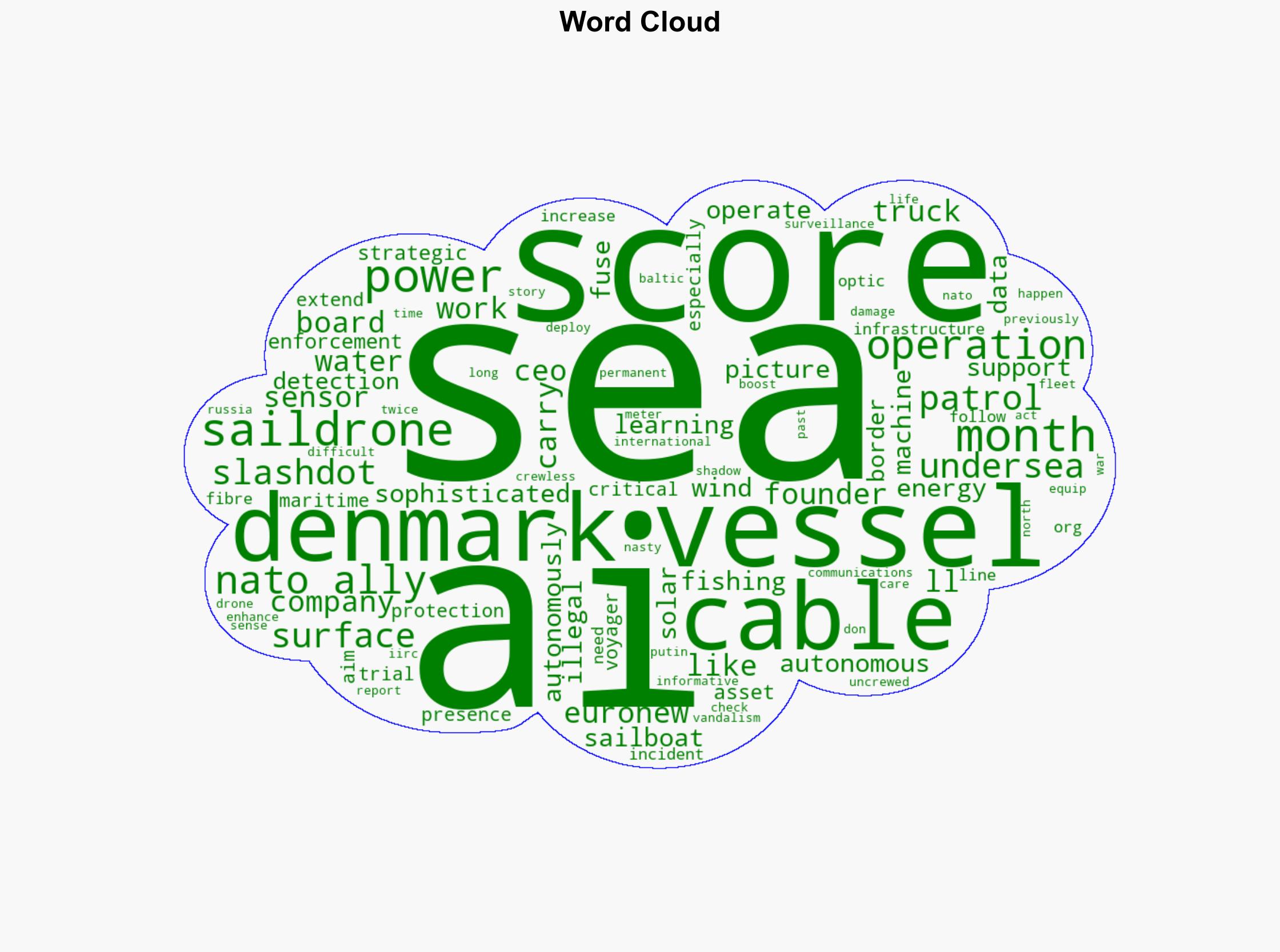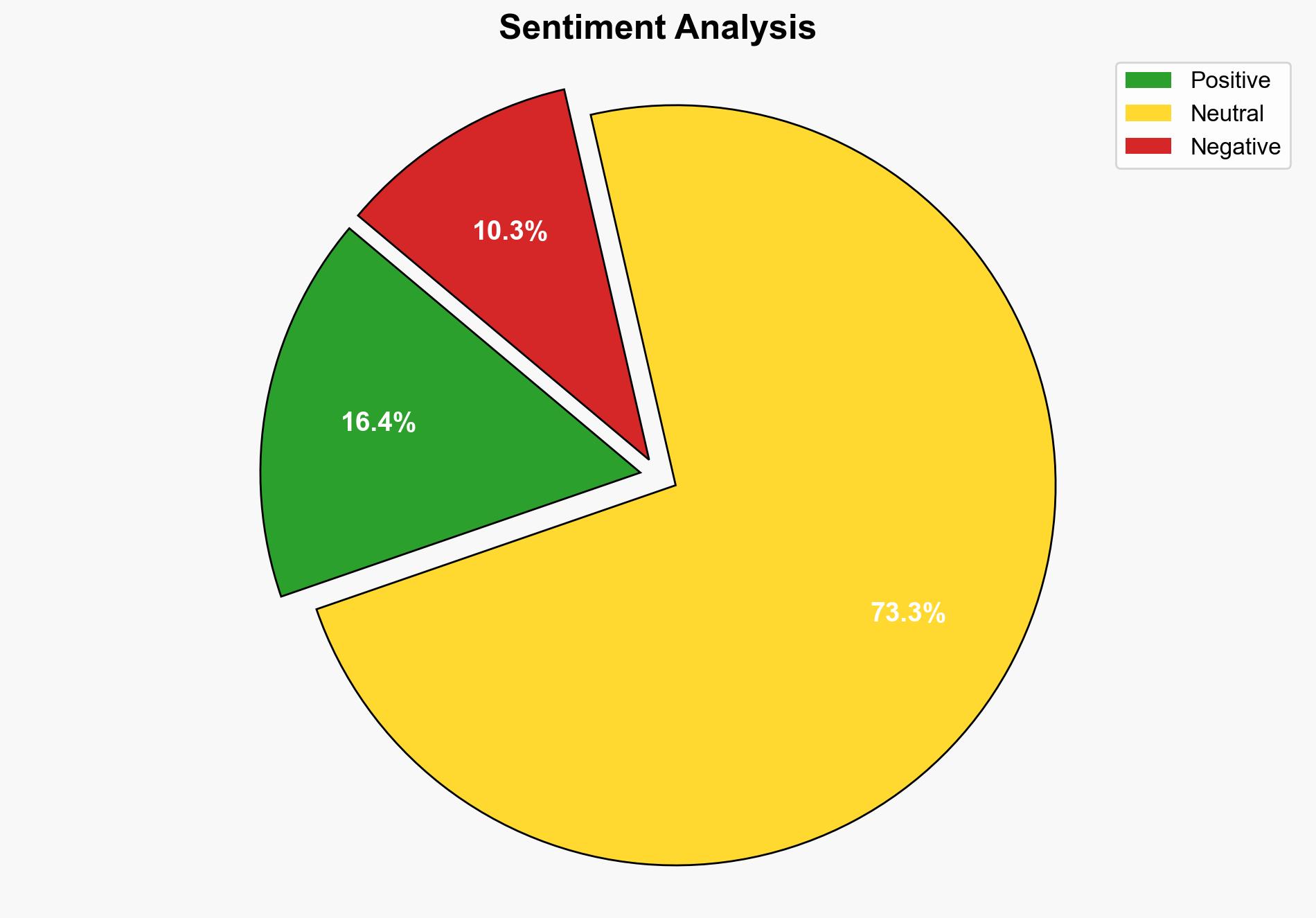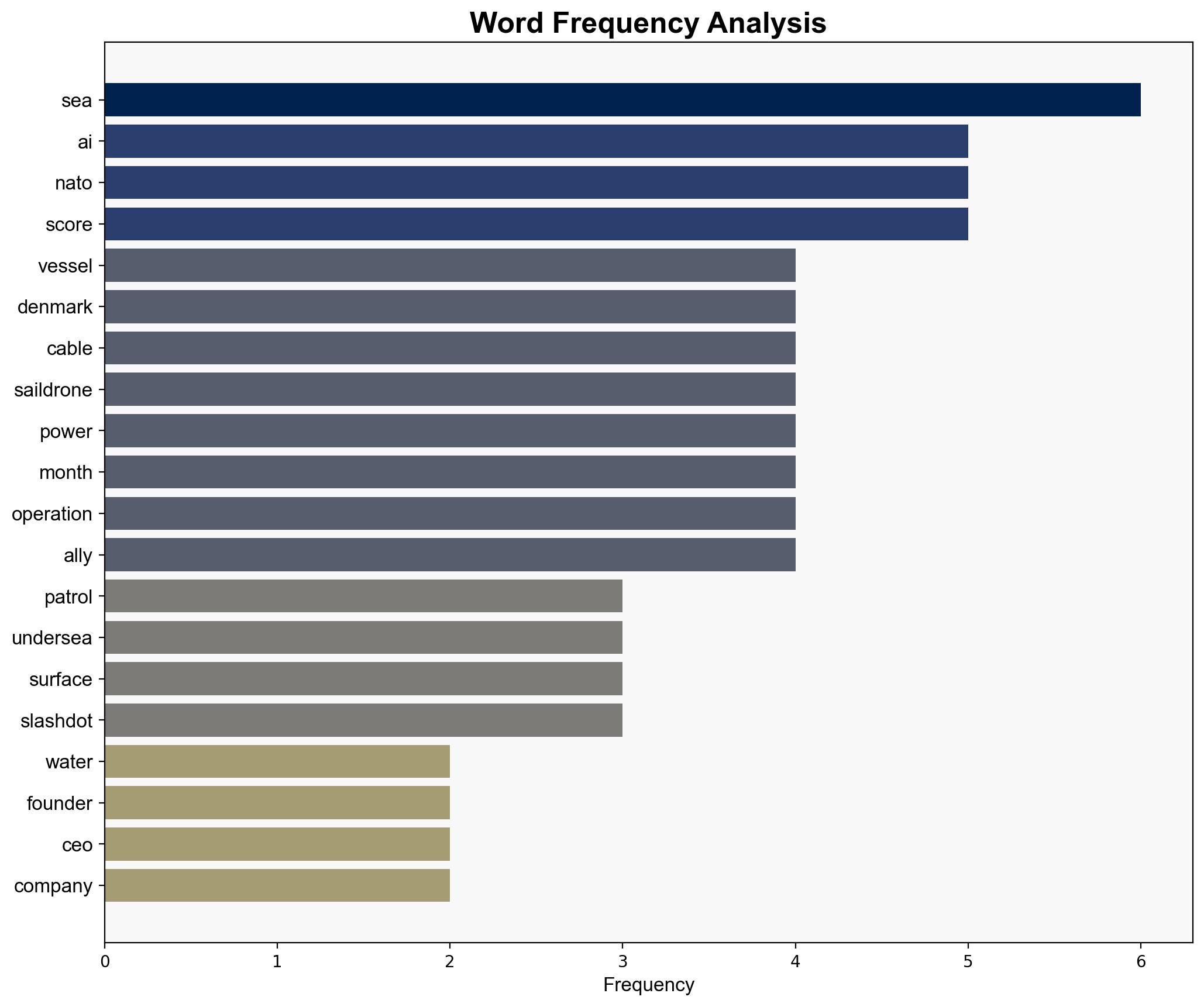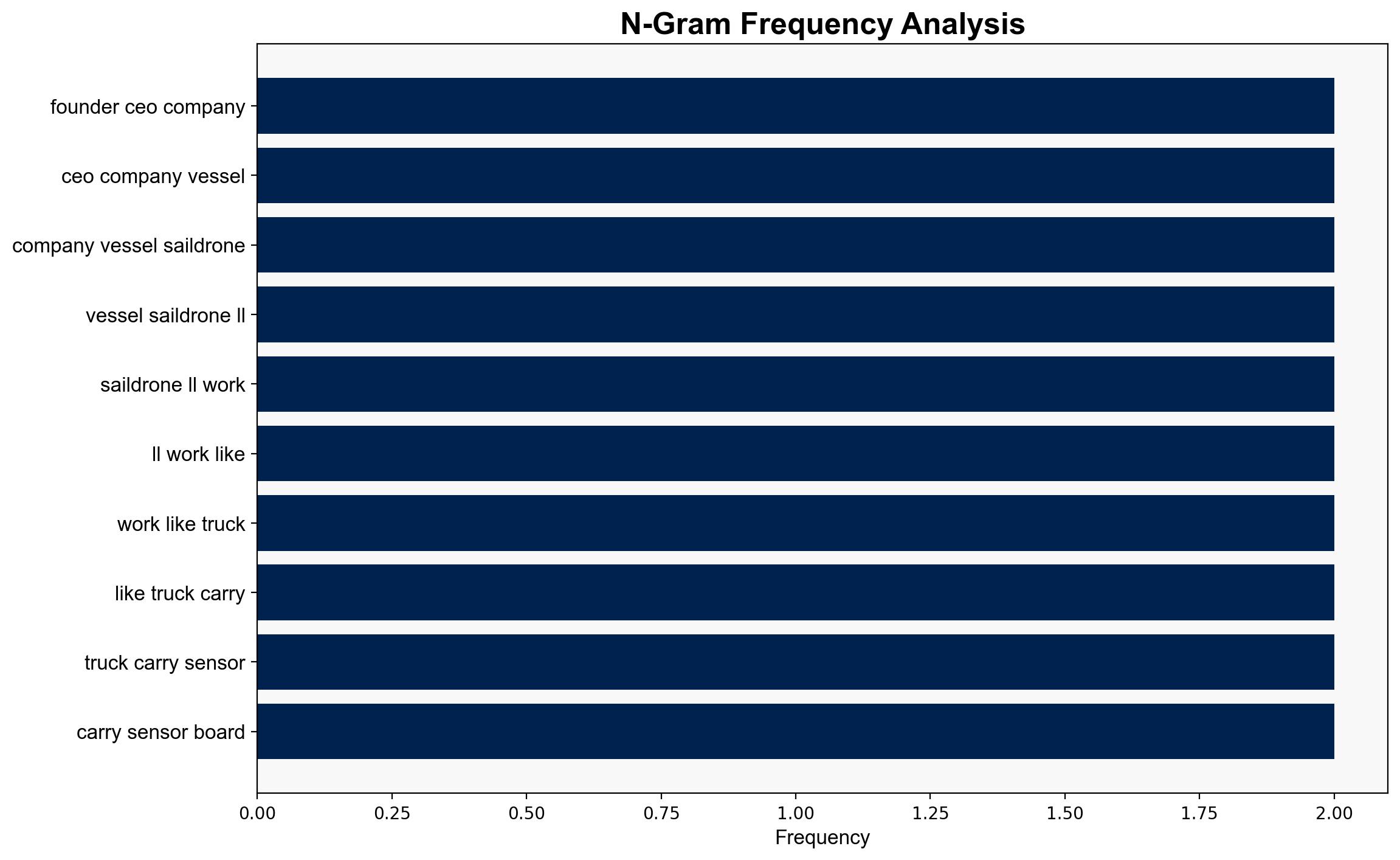How a Crewless AI-Enhanced Vessel Will Patrol Denmark’s and NATO’s Waters – Slashdot.org
Published on: 2025-06-28
Intelligence Report: How a Crewless AI-Enhanced Vessel Will Patrol Denmark’s and NATO’s Waters
1. BLUF (Bottom Line Up Front)
The deployment of AI-enhanced, crewless vessels by Denmark and NATO allies aims to bolster maritime surveillance and protect critical undersea infrastructure in the Baltic and North Seas. These vessels, equipped with advanced sensors and machine learning capabilities, are expected to operate autonomously for extended periods, enhancing detection of illegal activities and safeguarding strategic assets. The initiative responds to past incidents of undersea cable damage, emphasizing the need for increased maritime presence and resilience.
2. Detailed Analysis
The following structured analytic techniques have been applied to ensure methodological consistency:
Adversarial Threat Simulation
Simulated potential threats to undersea infrastructure, identifying vulnerabilities in existing maritime security frameworks and proposing resilience strategies to counteract cyber and physical threats.
Indicators Development
Developed indicators to monitor anomalies in maritime traffic and communication systems, facilitating early detection of unauthorized activities or potential threats.
Bayesian Scenario Modeling
Utilized probabilistic models to assess the likelihood of various threat scenarios, aiding in the strategic planning of maritime security operations.
3. Implications and Strategic Risks
The integration of AI-enhanced vessels into maritime security operations presents both opportunities and risks. While enhancing surveillance capabilities, these systems may also be vulnerable to cyberattacks. The strategic importance of protecting undersea infrastructure is underscored by the potential for geopolitical tensions and economic disruptions should these assets be compromised.
4. Recommendations and Outlook
- Enhance cybersecurity measures for AI systems onboard the vessels to prevent unauthorized access and manipulation.
- Conduct regular joint exercises with NATO allies to improve coordination and response times to potential threats.
- Scenario-based projections suggest that in the best case, increased surveillance will deter illegal activities; in the worst case, adversaries may develop countermeasures to evade detection.
5. Key Individuals and Entities
Richard Jenkins, founder and CEO of Saildrone, the company responsible for developing the autonomous vessels.
6. Thematic Tags
national security threats, cybersecurity, maritime surveillance, regional focus





